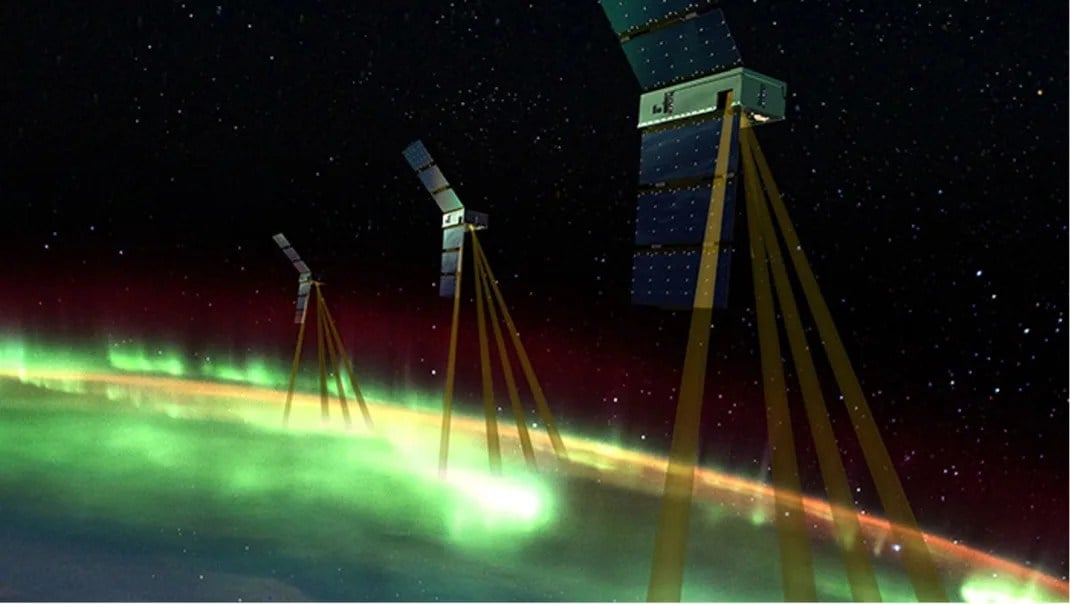NASA’s EZIE Mission
The Electrojet Zeeman Imaging Explorer (EZIE) mission, launched in March 2025, aims to investigate the auroral electrojet phenomena. These electrical currents, located 60 to 90 miles above the poles, connect the auroras to Earth’s magnetosphere. The mission consists of three small satellites, or CubeSats, designed to study these currents and their relationship with solar activity. This mission is crucial for understanding the Sun-Earth connection and its implications for space weather.
Auroral Electrojets
Auroral electrojets are intense electrical currents that flow near the poles. They are created by the solar wind, which is a stream of charged particles emitted by the Sun. These currents can carry about 1 million amps of electrical charge every second. When the solar wind interacts with Earth’s upper atmosphere, it generates spectacular auroras and magnetic disturbances.
Significance of the EZIE Mission
EZIE’s primary goal is to enhance our understanding of the auroral electrojets. By studying their structure and evolution, scientists can resolve longstanding questions about the electrical circuits connecting Earth to space. This understanding is vital for predicting space weather events that can impact satellites and ground infrastructure.
Technical Aspects of the Mission
Launched from California’s Vandenberg Space Force Base, the EZIE satellites orbit Earth at altitudes between 260 and 370 miles. This altitude allows them to observe the electrojets directly, which is not possible with traditional satellites or aircraft. The Microwave Electrojet Magnetogram (MEM) instrument onboard measures the phenomenon of Zeeman splitting, providing new vital information about the electrojets.
First Light Observations
Recent data from the EZIE mission shows promising results. The initial observations confirm that both the CubeSats and the MEM instrument are functioning as intended. This success paves the way for more detailed scientific investigations over the coming months.
Future Implications
The findings from the EZIE mission could lead to more accurate models of space weather. These models are essential for safeguarding satellites and other technology that can be affected by geomagnetic storms. Understanding auroral electrojets also has broader implications for studying other magnetised bodies in our solar system.
Month: Current Affairs - April, 2025
Category: Science & Technology Current Affairs







